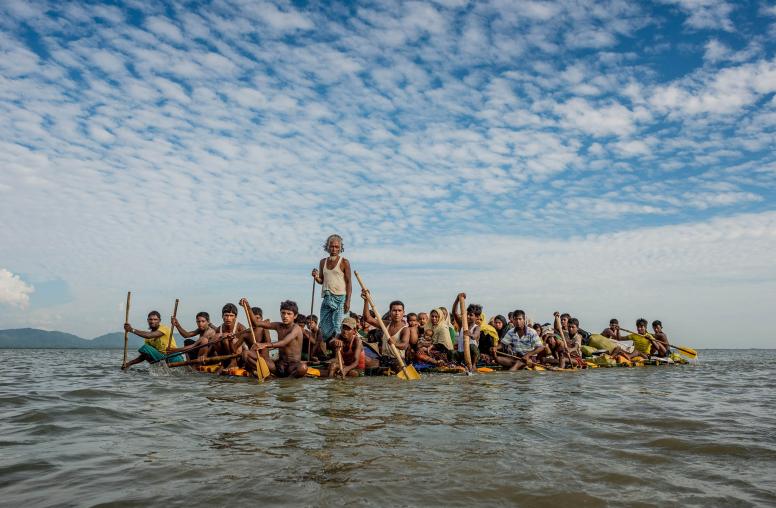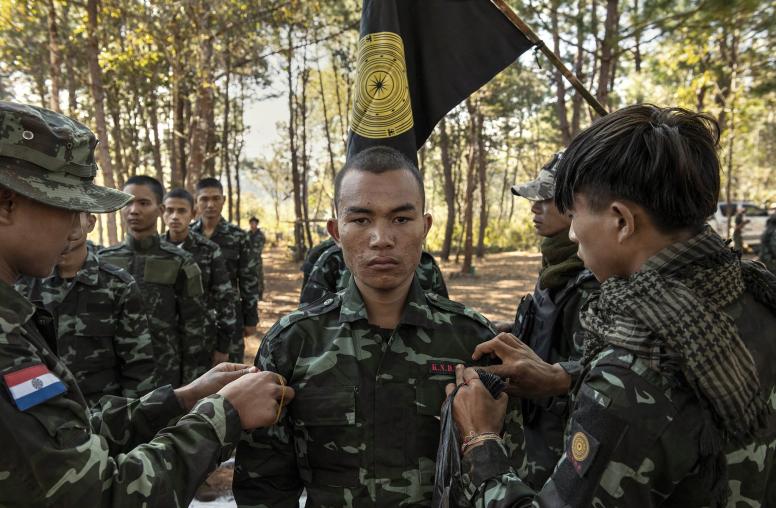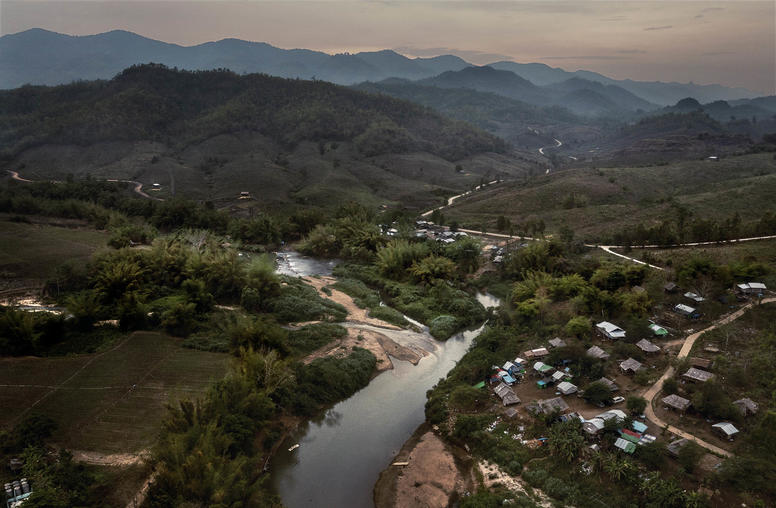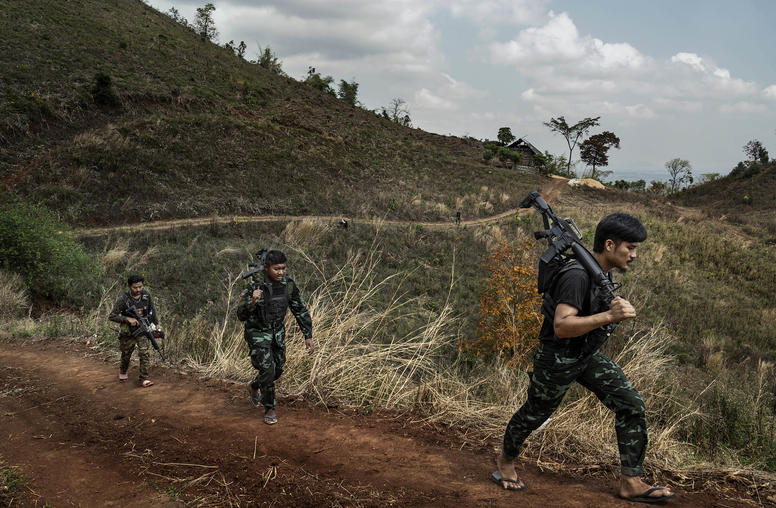How a Fractured Myanmar is Navigating U.S.-China Rivalry
The country’s civil conflict raises, rather than diminishes, the importance of examining foreign influence.
Editor’s Note: The following article is part of a new USIP essay series, “Southeast Asia in a World of Strategic Competition.” The opinions expressed in these essays are solely those of the authors and do not represent USIP, or any organization or government.
As the rivalry between the United States and China intensifies, Southeast Asian countries have been forced to navigate this growing power competition. The challenge has proven formidable even for those with strong governance and stability. For Myanmar — where a civil conflict between the ruling military junta and a loose alliance of resistance groups recently entered its fourth year — developing a cohesive approach to navigating U.S.-China competition might seem unattainable and unimportant in the current moment.
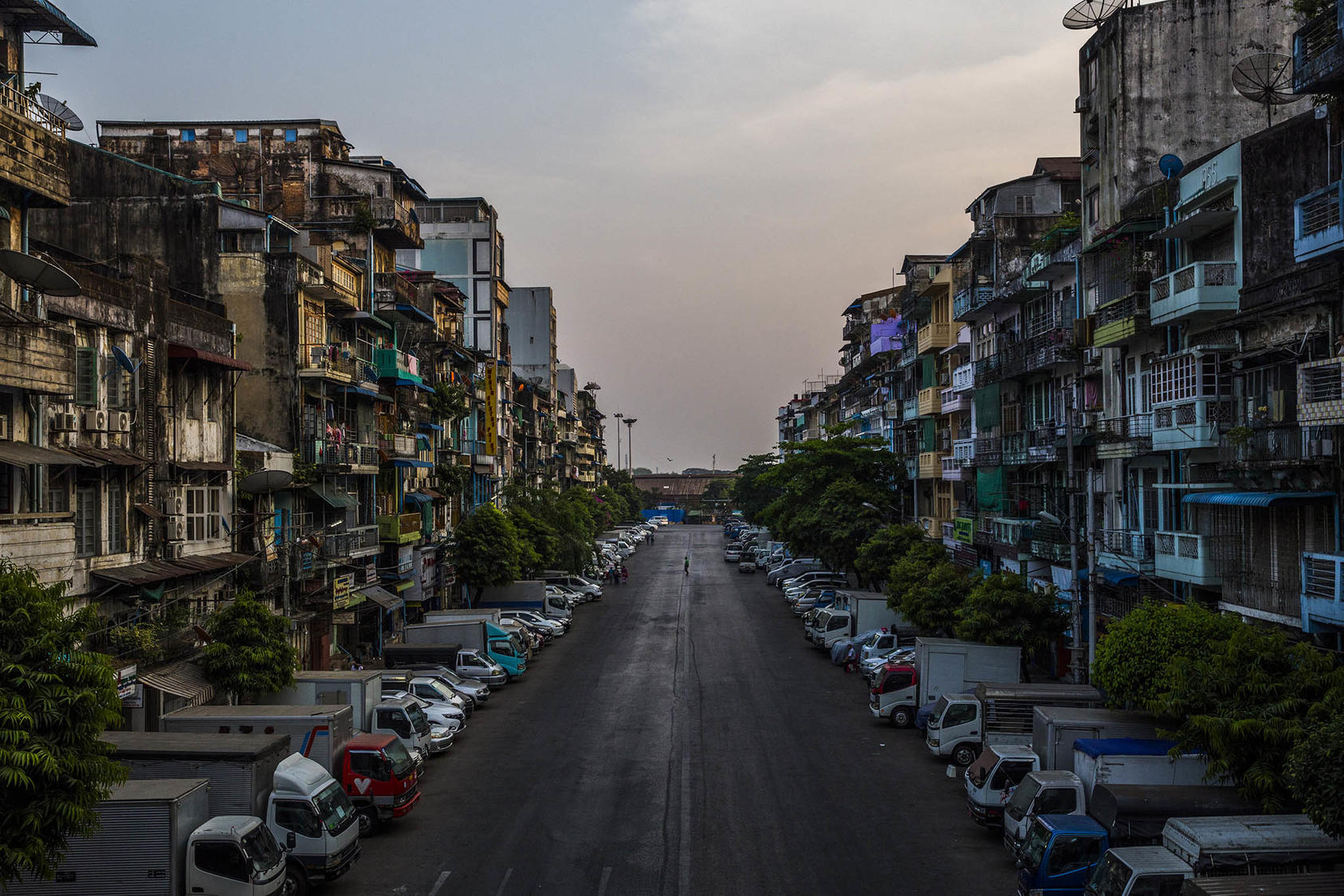
But Myanmar’s internal instability is precisely why it is so important to examine the country’s role in the broader landscape of U.S.-China competition.
In such a fragile situation, Myanmar is vulnerable to the substantial influence of a neighbor like China. And whether it’s the junta or, more recently, ethnic armed groups along the border, Beijing has shown it is willing to support whichever power broker provides protection for its economic interests and access to the Indian Ocean.
Should China see an advantage in furthering its engagement in Myanmar, the country might become beholden to China’s economic investments rather than the interests of Myanmar’s people. For a democratic and stable future to take root, it’s crucial to understand how China and the United States view Myanmar’s current conflict — and how resistance leaders can use this to their advantage as they fight for a return to civilian governance.
Chinese and U.S. Interests in Myanmar
At the moment, China and the United States have vastly different priorities with respect to Myanmar.
China has substantial economic investments in Myanmar. The scope of these investments is such that Myanmar risks becoming a “pseudo-Chinese state” or Chinese satellite. Additionally, many of these investments flow from Myanmar’s geo-strategic importance as an unfettered access point to the Indian Ocean. China hopes to use the scale and location of these investments to increase its sphere of influence in the region, which would offer Beijing a new strategic advantage.
In return for access to natural resources in border areas and the advancement of its strategic economic interests, China has previously used its veto power at the U.N. Security Council to shield successive military regimes in Myanmar from international condemnation and sanctions over its human rights violations.
In contrast to Beijing’s approach, the U.S. government has a long history of providing support to democratic forces and imposing sanctions on Myanmar’s various military regimes.
When Myanmar opened up in 2011 under a quasi-civilian government, the United States welcomed the reform process. And after the National League for Democracy (NLD) government took office in 2016, the United States lifted economic sanctions that had been in place for two decades. The U.S. government also provided support to democratic forces in the areas of good governance and the rule of law. For the United States and its allies, China’s growing influence in Myanmar is also a key concern.
Myanmar: Before and After the Coup
During the democratic period before the 2021 coup, the NLD government tried to balance Beijing’s influence and Myanmar’s reliance on China by also inviting other countries to invest in a bid to play foreign actors’ interests against each other.
Additionally, the NLD government tried to set a framework so that investment projects, including the China-Myanmar-Economic Corridor (CMEC), would be benchmarked against a set of development criteria to safeguard Myanmar’s national interests. While China still pushed its economic and strategic interests in Myanmar during the NLD government, civil society groups and affected communities were typically able to raise their voices against negative impacts caused by Chinese infrastructure and mining projects.
Since the coup, however, Myanmar has made a complete U-Turn after a decade of reform, with the junta plunging the country toward status as a failed state amid an economic downturn and increasing crime and security concerns.
There have been rampant human rights violations and crimes against humanity under the junta, with state violence even reaching the middle part of the country where such crimes were previously unprecedented. Meanwhile, opposition forces have increased fighting against the military junta in various parts of the country, with the junta suffering devastating losses in recent months.
Without a democratic restoration and a return to good governance, Myanmar is not in a position to guard against powerful foreign influence. However, if the various revolutionary forces can coordinate effectively under the banner of ending the military junta and establishing a federal democratic system of governance, then it’s possible they could re-establish stability and even take advantage of U.S.-China power competition in service of Myanmar’s own interests.
How Powerful Actors Have Responded to the Coup
Since the coup, the U.S. government has resumed its sanctions regime against the military junta and shown its support for resistance forces. In early 2023, Myanmar’s opposition National Unity Government (NUG) was able to officially open a liaison office in Washington, D.C. — although the U.S. government has yet to formally endorse the NUG’s claim for recognition as Myanmar’s legitimate government.
Meanwhile, China took a cautious approach in the wake of the coup and kept some distance from the military regime so as not to increase anti-China sentiment among the general population. Then in late December 2022, China resumed enhancing its diplomatic cooperation with the junta.
On the economic front, China has pushed ahead with its plan for the CMEC now that the junta has shut down spaces for civil society to object to the potential negative impacts. However, due to clashes along planned CMEC projects, the realization of these projects remains uncertain.
Despite the stalled implementation of these official projects, illegal and unregulated China-led mining — such as rare earth mining — has been increasing along the China-Myanmar border, with negative impacts on local people’s environment and livelihoods.
However, this was not the only shift in China’s approach to Myanmar. Preventing instability in Myanmar from spilling into China is a key concern, so as the Myanmar-China border became more porous, Beijing found itself compelled to exert influence on a wider variety of actors in Myanmar — including members of the Northern Alliance that are fighting against the military in border regions.
As such, China’s involvement in the peace process in Myanmar has been complex and seemingly contradictory, given that it has now provided support both to the military and some ethnic armed groups.
This was partly in response to the passage of the U.S. Burma Act in December 2022, which included provisions to provide non-lethal assistance to Myanmar’s ethnic armed organizations and the anti-junta People’s Defense Forces. This raised concerns in China about the potential for U.S. influence on the Northern Alliance members.
Another key reason for China’s new engagement with ethnic armed groups is the uncontrollable cybercrime syndicates in northern Shan State on the China-Myanmar border. These syndicates involve Chinese gangs, but they are often allied with junta-aligned Border Guard forces and militias, as well as the junta itself.
Beijing believes these syndicates pose a direct threat to Chinese national security and stability along the border. And despite a series of high-level meetings between Chinese officials and the military junta, the junta has failed to crack down on these criminal enterprises. One of the final straws for Beijing came in October 2023, when dozens of Chinese nationals were massacred in a cybercrime compound run by the junta-aligned Kokang Border Guard Force.
Operation 1027 and Its Implications
When ethnic armed groups in the Northern Alliance jointly launched Operation 1027 in northern Shan State a week after the massacre, it appears to have had the endorsement of China. The October 27 operation sought to eradicate the military junta in the border regions and combat the widespread online gambling fraud. In the weeks and months since, the military junta has lost huge swaths of territory, giving strength, inspiration and momentum to revolutionary forces in other parts of the country.
Resistance forces’ ability to coordinate fighting against the junta on various fronts indicates that the opposition is not just willing but capable of taking advantage of Chinese security concerns and China’s impatience with the military junta. In other words, China’s desire to eradicate the crime syndicates has reinforced the revolutionary forces’ agenda of eradicating the military junta.
However, Northern Alliance members agreed to a cease-fire with the military junta after China brokered talks. This development demonstrated China’s ability to exert its influence on warring parties to ensure that Chinese interests in the northern region were served over the stated goals of the warring parties.
But the junta broke the cease-fire just days later, revealing the current limits of Chinese pressure and control over both the military junta and the Northern Alliance members.
This lack of total influence leaves the future of Chinese economic interests in the region — especially border trade and strategic CMEC projects — uncertain. But it also raises questions regarding how far China’s influence might eventually reach. For instance, could China eventually pressure the Northern Alliance members to scrap their overall revolutionary agenda, even though that was one of the original goals of the 1027 Operation?
Where Myanmar’s Resistance Goes From Here
Regardless of these limitations, China’s influence is likely to grow in the country as both the military and the NUG make use of China’s influence in the country for their respective agendas.
Despite initially instigating anti-China sentiments in the wake of Operation 1027 and rerouting their once-frequent public criticism of U.S. support for pro-democratic forces toward China, the junta won’t dare prolong their rebuke of Beijing. Junta leaders know they rely on their powerful neighbor to shield them internationally, and the regime recently reaffirmed their allegiance to China by publicly supporting the One China Policy.
Meanwhile, the Myanmar people have long suffered under successive military rule. They want a federal democracy and sustainable peace and would take any Chinese support for their revolutionary efforts — even if it’s also in service of China’s own interests. The NUG has even affirmed their alignment with China in a public statement.
As revolutionary efforts gain momentum in the wake of Operation 1027, the Myanmar people, as well as resistance leaders and forces, need to be cautious of both the military’s fratricidal attitudes and Beijing’s expectation that any support is reciprocated through the protection of Chinese interests.
Rather than accept short-term Chinese support, resistance actors need to ensure internal unity behind the ultimate goal of a federal democratic country with good governance. Only then can they safeguard national interests against any other foreign interests, and only then can they safely take advantage of Chinese support.
In furthering this ultimate goal, resistance leaders can also take advantage of U.S.-China competition. The Unted States would not want to see Myanmar subjected to the absolute influence of China. And playing each country’s national interests off one another — as the NLD government did in the pre-coup era — could help a small state like Myanmar level the playing field and assert its own ambitions in a more conducive strategic environment.
Additionally, one of the issues holding Myanmar back from better navigating U.S.-China competition is the fractured nature of governance. The junta regime remains heavily sanctioned by the United States. And while there is ample international support for the NUG, its ability to govern — yet alone conduct foreign policy — is deeply hampered by its lack of official recognition. One intermediate goal for resistance leaders could be securing U.S., and perhaps even Chinese, recognition of the NUG as a legitimate government.
Myanmar’s pro-democracy resistance is right to seize any support in their fight against the junta. But to ensure that a return to civilian rule is accompanied by good governance and stability, resistance actors will need to possess the ability to ward off foreign interests that come at the expense of Myanmar’s citizens. This will be no small feat in the face of U.S.-China rivalry. To succeed will require political dialogue among various ethnic groups and resistance forces, as well as a commitment to play the interests of the two major powers against one another.
Phyu Hnin is an independent analyst and researcher working on conflict in Myanmar.
